How to use social listening to understand your audience
According to Statista, 65% of the world’s population fall under the category of internet users. Daily tasks, from checking the news to communicating with friends and family to making an income, are increasingly accomplished online. But the information about these internet users is difficult for businesses to gain in an ethical way, as people become more concerned with privacy protection. This is where social media comes into play.
4.8 billion people across the world are also active on platforms like Instagram, giving brands a way to not only connect with their consumers more easily, but to gather valuable intel on everything from customer sentiments to industry trends. This tactic of analyzing audience behavior and trends is called social listening.
Alongside global social media use in general, the social listening industry is expanding at a rapid rate — 14% each year with a 6.2-billion USD valuation in 2022.
Simply having a strong social media presence isn’t enough to give your customers the personalized online experiences they crave. To truly understand your audience and make informed decisions, you need to practice social listening.
In this guide, we’ll explore the concept of social listening, its value across business departments, and how to implement an effective social listening strategy.
What is social listening?
According to a Global Web Index report, the average consumer from Gen X or older is on over 4 different social media platforms, with that number jumping to 6 for younger generations. Brands need tools that allow them to easily track trends and behavior across all the major platforms, if they’re going to stay on top of such a multifaceted market.
Social listening is the process of monitoring and analyzing topics, conversations, and trends on social media platforms to gain insights into the opinions, preferences, and behaviors of a target audience.
But social listening isn’t just for covering a range of platforms, it also increases the depth of your audience understanding: The process goes beyond monitoring your brand mentions and involves understanding the larger conversations happening in your industry or niche.
Social monitoring vs. social listening
Before delving deeper, it's important to distinguish between social monitoring and social listening. Social monitoring involves tracking and observing mentions of your brand, products, or keywords related to your business.
On the other hand, social listening takes monitoring a step further by analyzing online behavior en masse, often using tools, and extracting valuable insights to inform your strategies. It’s a more active form of research on your social audience that is often paired with powerful processes like audience intelligence.
Social listening is a strategic approach to monitor and respond to discussions and sentiments about a brand, industry, or specific topics on social media and the web at large. The practice changes significantly across two dimensions: manual-automated and proactive-reactive.
Manual vs. automated social listening
Manual social listening involves manually scanning social media feeds and online forums to find mentions of their brand, products, or related keywords. You might use the search functions on different platforms or set up Google Alerts for certain keywords.
While this method can provide an in-depth, qualitative understanding of audience sentiment, it’s time-consuming and prone to human error. It's also nearly impossible for you (or your team) to capture all mentions in real-time, given the vast and fast-moving nature of social media conversations.
Automated social listening deploys technology to monitor and analyze online conversations. This involves using specialized software or tools that track mentions of specific keywords, phrases, brands, or topics across a wide range of online platforms and provide real-time updates.
Automated tools can process vast amounts of data much faster and more accurately than people can, providing a quantitative understanding of audience sentiment. However, they may not fully understand nuanced language, sarcasm, or cultural context in the way that you and your team can.
Proactive vs. reactive social listening
Proactive social listening is about anticipating conversations, issues, or trends that might affect your brand and strategically analyzing online spaces to identify specific narratives. This could involve identifying emerging trends in your industry, keeping an eye on competitors, or tracking broader social conversations that might affect your brand's perception.
A proactive approach allows your brand to stay ahead of potential crises, discover new opportunities, and lead conversations rather than simply respond to them.
Reactive social listening involves responding to direct mentions of your brand or discussions relevant to your industry as they occur. This might involve responding to a customer complaint, answering a question, thanking someone for positive feedback, or participating in a trending conversation relevant to your brand.
While a reactive approach ensures that you are responsive and engaged with your brand’s audience, it also means playing catch-up — especially if negative issues spiral out of control and lead to reputational damage.
In practice, an effective social listening strategy involves a mix of both manual and automated methods, as well as both proactive and reactive approaches. This ensures that you and your team can fully understand, and effectively engage with, your brand’s online audience.
The value of social listening
There’s a reason the social listening market is increasing in value at such a rapid rate — it’s one of the most effective ways to gather insights about customers. Given that consumers increasingly want personalized brand experiences that align with their exact needs, desires, and values, the ability to monitor relevant data across platforms is imperative.
Brand health
One of the key benefits of social listening is the ability to keep track of your brand's growth and reputation. Brand mentions are a great measure of consumers’ affinity for your business and measuring them can help you identify areas where your brand is thriving and areas that need improvement. This knowledge allows you to make necessary adjustments to enhance your brand's perception in the eyes of your audience.
Increase brand mention visibility: Social listening enables you to have a centralized view of all the conversations happening about your brand. This eliminates the need to manually search for brand mentions on various platforms, saving you time and ensuring that you never miss an opportunity to engage with your audience.
Engage directly with your target audience: Social listening allows you to identify conversations related to your industry or niche, even if your brand is not directly tagged or mentioned. This opens up opportunities to engage with potential customers, build and manage relationships, and establish your brand as an authority in the industry — even with those who haven’t tagged you directly.
Crisis management and prevention: Social media crises can happen unexpectedly and spread rapidly. With social listening, you can detect early-warning signs of potential crises by monitoring sentiment, identifying negative trends, and addressing issues proactively. This enables you to prevent a crisis from escalating and protect your brand's reputation by intervening with a PR campaign driven by social listening insights.
Industry insights
Social listening not only provides insights about your brand but also offers valuable information about your entire industry, including the behavior and sentiments of your target audience and potential brand partners.
Audience behavior and interests: By analyzing conversations and trends in your industry, you can identify emerging opportunities and shifts in the culture, anticipate customer needs, and adapt your strategies accordingly.
Increasing customer acquisition: Through social listening, you can identify potential leads and engage with them directly. By understanding their preferences, pain points, and interests, you can tailor your marketing efforts to attract and convert leads into loyal customers.
Finding influencers and brand advocates: Social listening allows you to identify influential individuals and brand advocates who resonate with your target audience or are talking positively about your brand or industry. By building relationships with these individuals, you can leverage their influence to amplify your brand's reach and gain credibility among their followers.
Audience Insights
Social listening helps lay the groundwork for deeper analysis of your consumer base with audience intelligence tools. These tools help unearth the demographic, psychographic, technographic, and behavioral information underlying specific social media segments and provide more actionable information about the people within each niche. By combining social listening tools with audience intelligence, brands create a powerful insights engine that fuels more effective marketing materials
Competitive analysis
Another reason social listening is such a valuable practice is that it enables you to keep up with your competitors. By monitoring their brand mentions, campaigns, and customer feedback, you can gain insights into their strategies, strengths, and weaknesses. This information can help you identify opportunities for differentiation and improve your own content marketing efforts.
Social listening examples
Before we get into the details of how you can apply social listening tactics in your business operations, let's take a high-level look at some real-world examples to illustrate the power of social listening.
Netflix
Netflix, for instance, uses social listening to understand viewer preferences and tailor their content recommendations. The streaming giant has multiple social platforms (75, according to Unmetric) dedicated to specific segments of its user base, including accounts for specific geographic regions, content interests, and suggestions. These social accounts allow the larger Netflix brand to tap into hyper-niche audiences so they can extract targeted insights.
In the midst of the pandemic, the Audiense team also used a blended social listening-audience intelligence approach to examine how the preferences of specific Netflix UK users segments, like series die-hard fans and football fans, shifted due to the circumstances.
Chipotle
As one of the most active, popular food brands on X/Twitter, Chipotle consistently finds a way to infuse its content with trending topics to keep its 1.3 million followers engaged. From viral memes to features with up-and-coming celebrities to references to major sports events, its marketing team has its finger on the pulse of trending topics — a clear sign that they leverage social listening.
For example, Chipotle took advantage of the buzz around Formula 1, the Miami Grand Prix, and America’s Haas F1 team to create this viral post that was viewed by over 850,000 people.
quick pit stop in the @HaasF1Team x Chipotle car 🏎💨 pic.twitter.com/zmrLhKRRrf
— Chipotle (@ChipotleTweets) May 6, 2023
Slack
Slack engages in social listening to understand user needs and enhance their collaboration platform. The B2B SaaS brand has its finger on the pulse, consistently sharing social content that displays an understanding of the needs, wants, and interests of its target audience.
But they don’t just use it for social media marketing — social listening also helps Slack identify potential product improvements. For example, it recently announced a partnership on X/Twitter, during Notion’s rollout of its new AI-powered feature called Projects.
The best teams don't work in silos, and neither do the best tools.
— Slack (@SlackHQ) June 2, 2023
We're delighted to be partnering with @NotionHQ on its Projects launch! Give the Slack integration a spin and get a taste of frictionless project management. https://t.co/GiXnLirJfh pic.twitter.com/c1sjfuTMpJ
Social listening allows both tech companies to monitor their audience and identify which of their followers and users are fans of both Notion and Slack.
Implementing a social listening strategy
Unlike a social media monitoring strategy, implementing a social listening strategy takes more than just a dedicated social team and analytics accounts. Now let’s take a look at the steps that go into rolling out an effective social listening strategy.
-
Choose a social listening tool
There are several popular social listening tools available for monitoring and analyzing conversations on social media. While many of them have overlapping features and capabilities, it's still important to vet them all and select a tool that best aligns with your specific needs and budget.
A few notable tools social listening tools include:
Agorapulse
Agorapulse is an all-in-one social media management tool that includes features such as scheduling, monitoring, engagement, and analytics. One of Agorapulse's key features is its social listening capabilities; you can capture and monitor conversations about your brand or industry on platforms like X/Twitter, Instagram, Facebook, and YouTube.
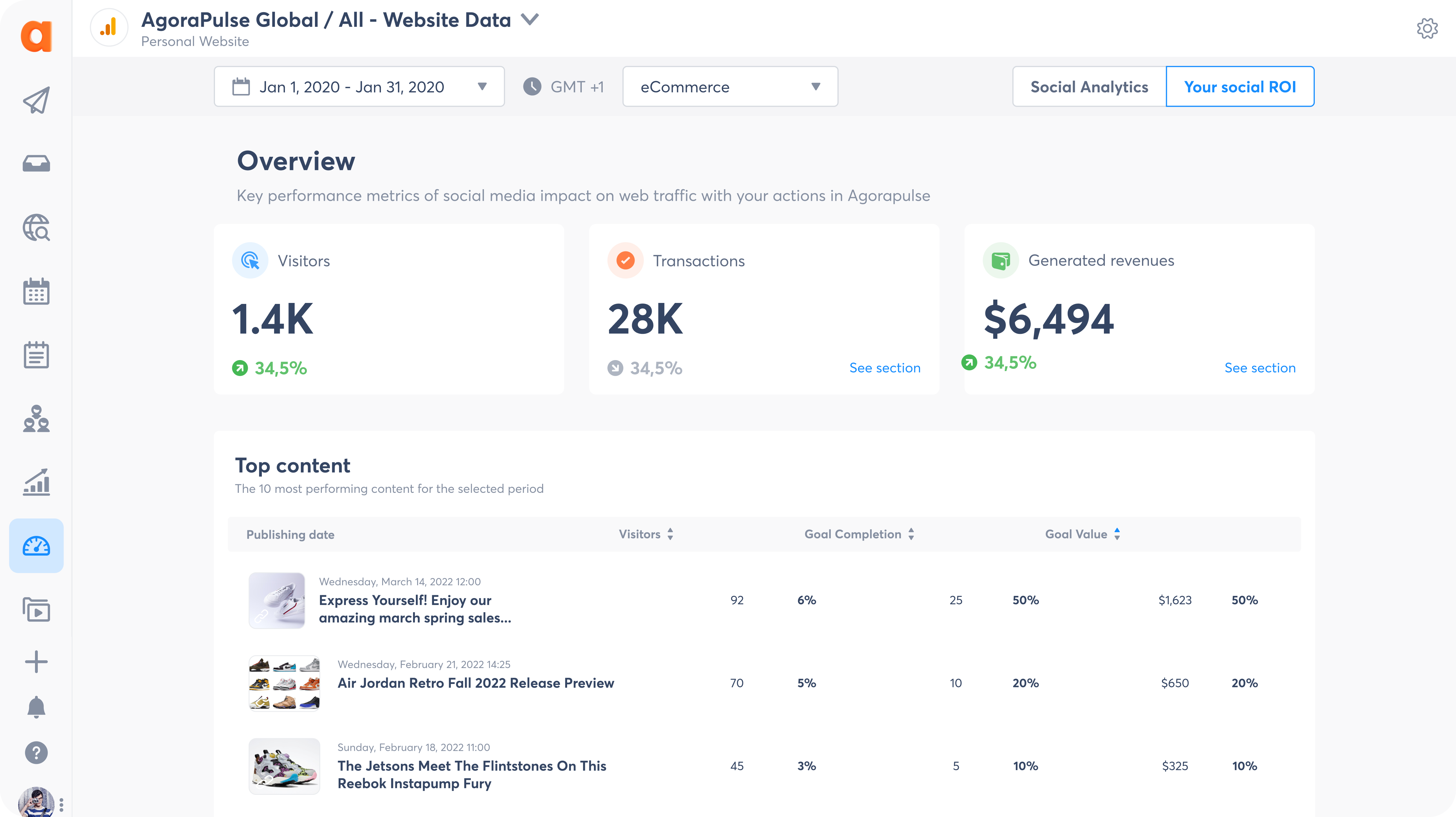
Brandwatch
Brandwatch is a social media and audience analytics tool that helps businesses monitor conversations about their brand across social media platforms. It helps you track mentions of specific products or services, identify trends and sentiment, and gain insights into consumer behavior and attitudes.
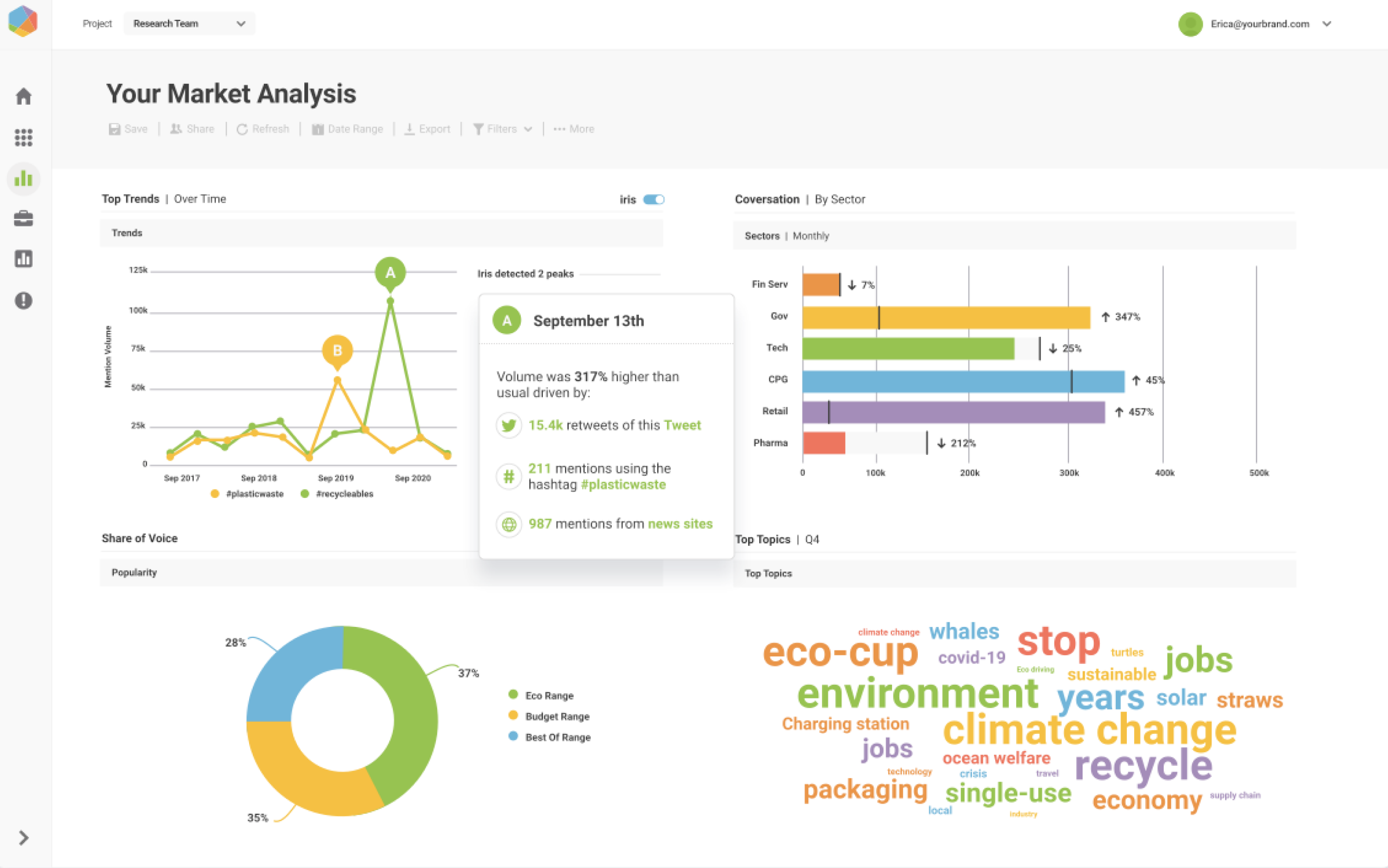
BuzzSumo
BuzzSumo is a social media monitoring and listening tool that helps you track brand mentions and identify popular content and trends across various social media platforms, including X/Twitter, Facebook, Instagram, and LinkedIn. It also assists with the analysis of brand reputation and understanding how your content performs compared to that of competitors.
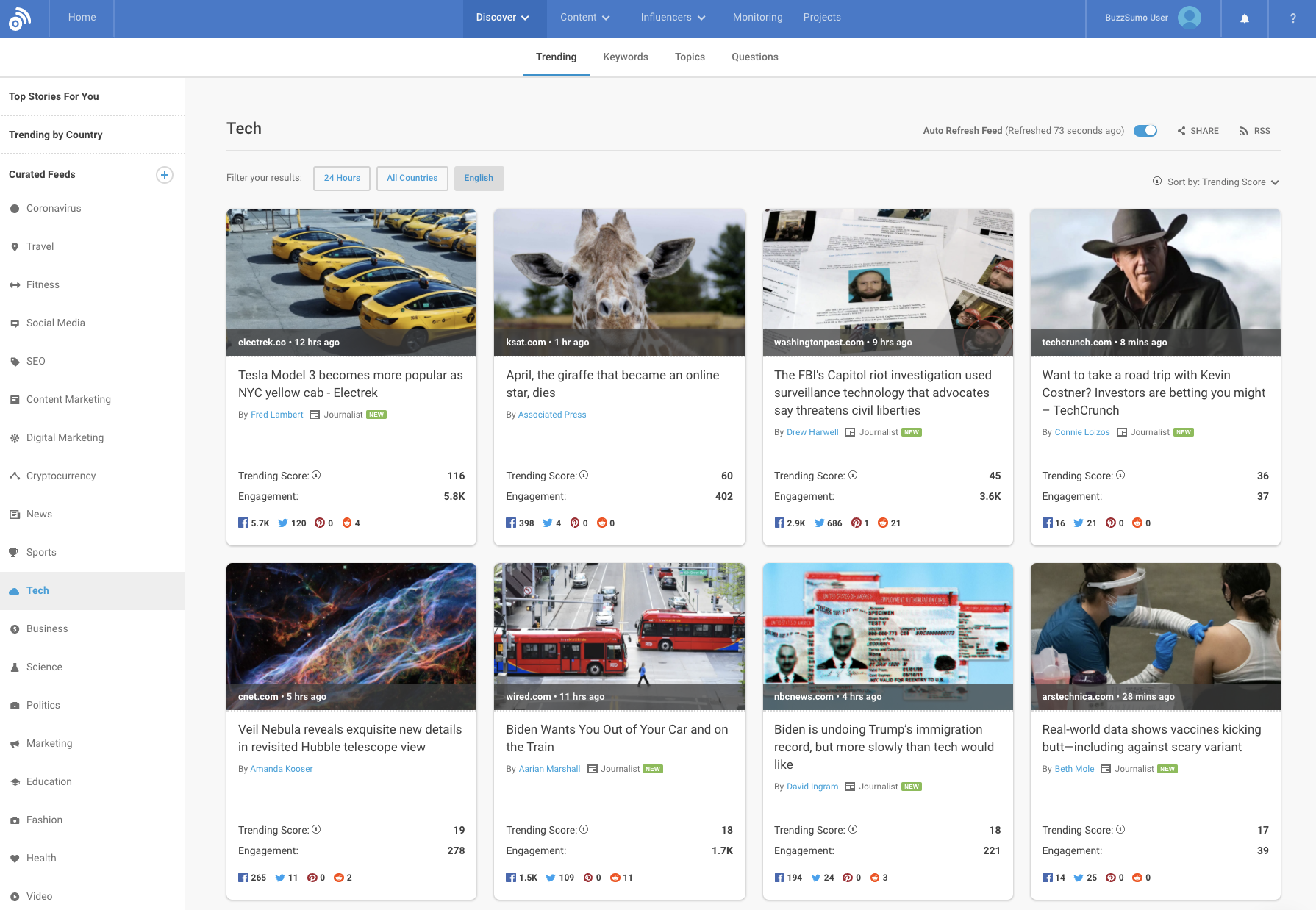
Meltwater
Meltwater also helps you monitor brand mentions and track your social media presence across various platforms. Meltwater uses AI-powered technology and natural language processing to monitor millions of social media posts and identify important trends, sentiments, customer insights, and voice share.
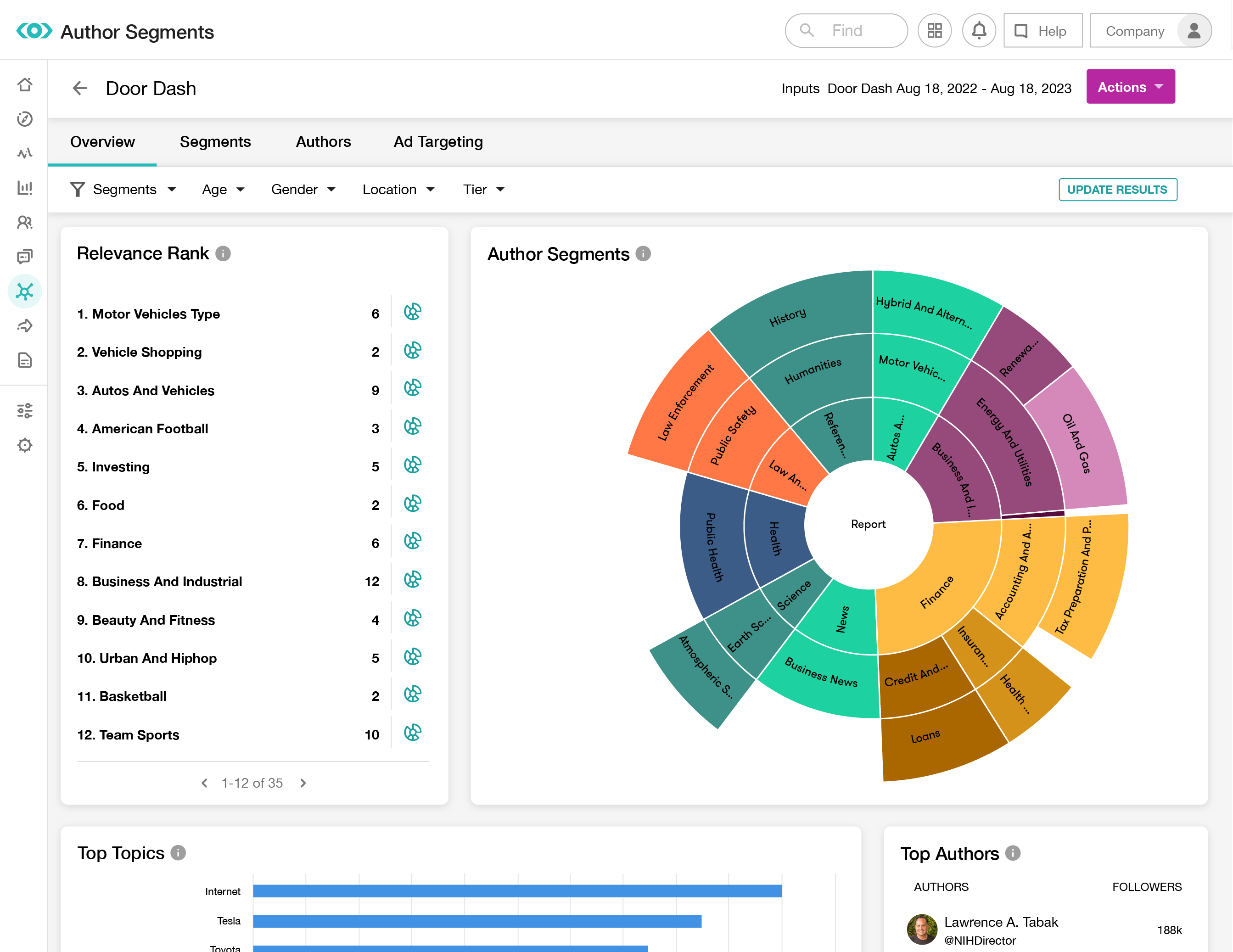
Pulsar Platform
Pulsar is a social listening and audience intelligence platform that helps businesses unearth deeper insights through its TRAC solution. Pulsar also offers tools like CORE and TRENDS to help with owned-channel analytics and visualizing the relationships between trending topics.
Pulsar integrates with other leading intelligence tools like Audiense, so businesses can more easily pass segmentation data between Insights and TRAC.
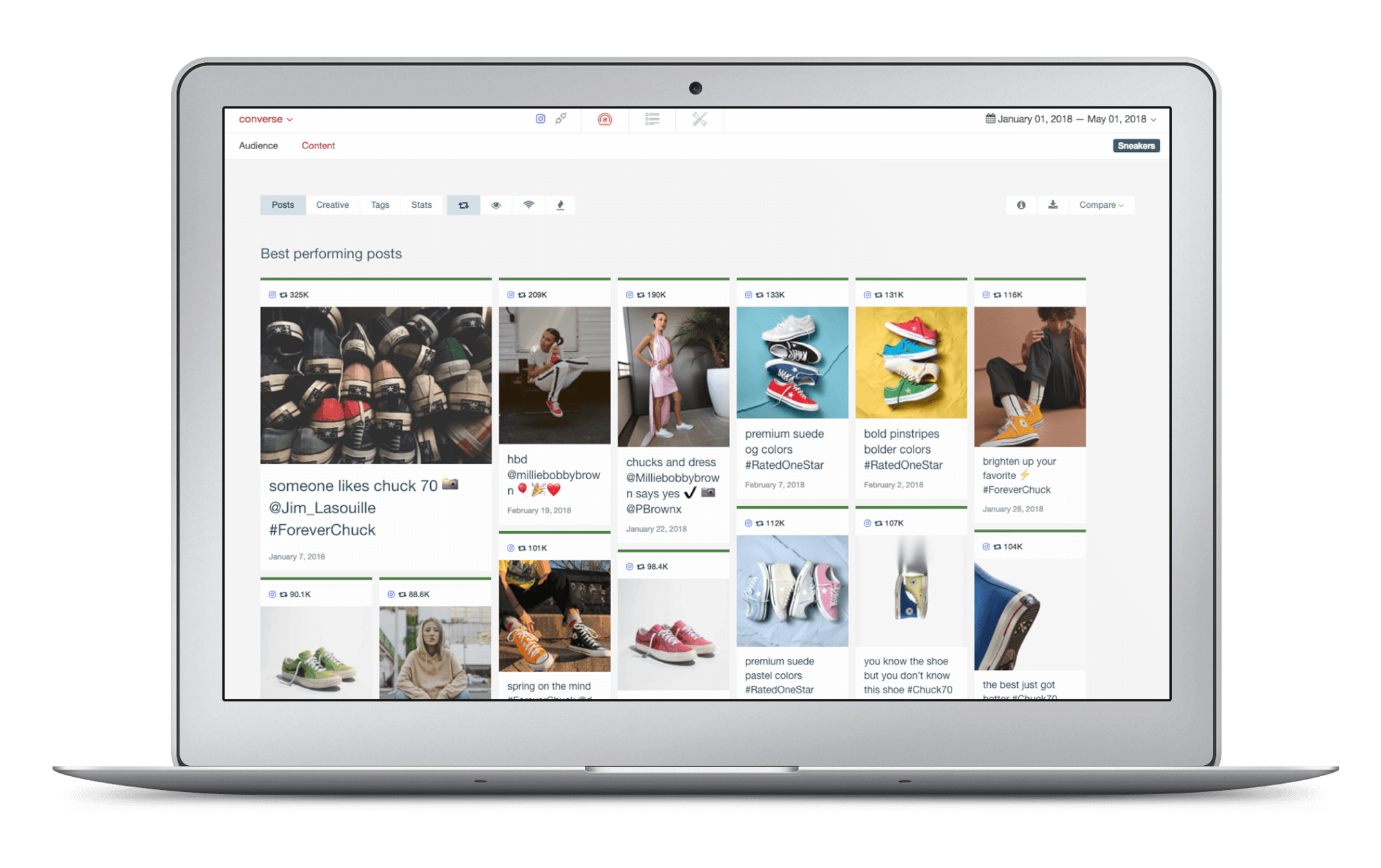
-
Determine your initial goals and desired outcomes
Before planning and rolling out your social listening strategy, it’s important to define your goals and outline what you hope to achieve. Whether it's improving customer service, streamlining product development, strengthening brand reputation, or increasing marketing efficiency, having clear objectives will guide your listening efforts.
-
Choose relevant social media channels
Identify the social media platforms where your target audience is most active. You can accomplish this by looking at the analytics tools each platform provides and confirming with your newly selected social listening tool. From here, you can focus your social listening efforts on the social channels most likely to provide relevant data and insights.
-
Build your topics and themes to listen to
Identify relevant keywords, phrases, hashtags, and topics that are important to your products, services, brand, and industry. This ensures that your team and social listening tools track the conversations and trends that matter to your audience. You can also dedicate some of your strategy to monitoring emerging topics and industry trends, helping you to stay ahead of the curve.
-
Learn from the competition
Including competitor monitoring as part of your social listening strategy is a must. By analyzing their social media activity, level of audience engagement, and the surrounding sentiments, you gain a competitive advantage. By learning from their successes and failures, you can refine your own strategies.
-
Measure the results of your listening efforts
Regularly measure the results of your social listening efforts relative to your goals. Utilize sentiment analysis to gauge audience sentiment towards your brand. Discover patterns and themes in the data to identify key insights and actionable opportunities.
Best practices for social listening
Similar to your other market research and audience intelligence efforts, the value you get from your social listening will vary depending on the consistency and strategy of your approach. To maximize the effectiveness of your social listening efforts, consider these best practices:
Be proactive and consistent with monitoring
Social listening is an ongoing process. Consistently monitor conversations, trends, and brand mentions to stay up-to-date with your audience's preferences and evolving needs. Free tools like Google Trends or the explore pages on X/Twitter, Instagram, and TikTok, can help you identify the topics worth listening to.
Train your team on social listening techniques
Social listening tools are only as good as the people who use them. Educate your team on the principles and techniques of social listening to ensure they understand how to leverage social listening insights. With new technologies like AI entering the fold, it's more important than ever that your team maintains pace with the full set of practices and tools available.
Integrate social listening across your organization
Social listening should not be limited to a single department like marketing. Integrate it into all departments that can make use of it, such as marketing, customer service, and product development, to harness the full potential of audience insights.
Always respect your audience's privacy
While social listening provides valuable insights, it's crucial to respect privacy regulations and ethical considerations. Ensure that you comply with data protection policies and obtain necessary permissions when collecting and analyzing user-generated content. The best way to accomplish this is by using social listening and consumer intelligence tools that are GDPR- and SOC 2- compliant.
Blend social listening with audience intelligence
Gathering social listening insights is a key first step for achieving a true understanding of your audience — but it’s just the start. After you understand what your social followers are interested in discussing online, you need to understand the who and why. Audience Intelligence tools like Audiense and Soprism help you identify the specific X/Twitter and Meta communities that are behind these discussions, so you can further analyze and segment them into actionable target groups.
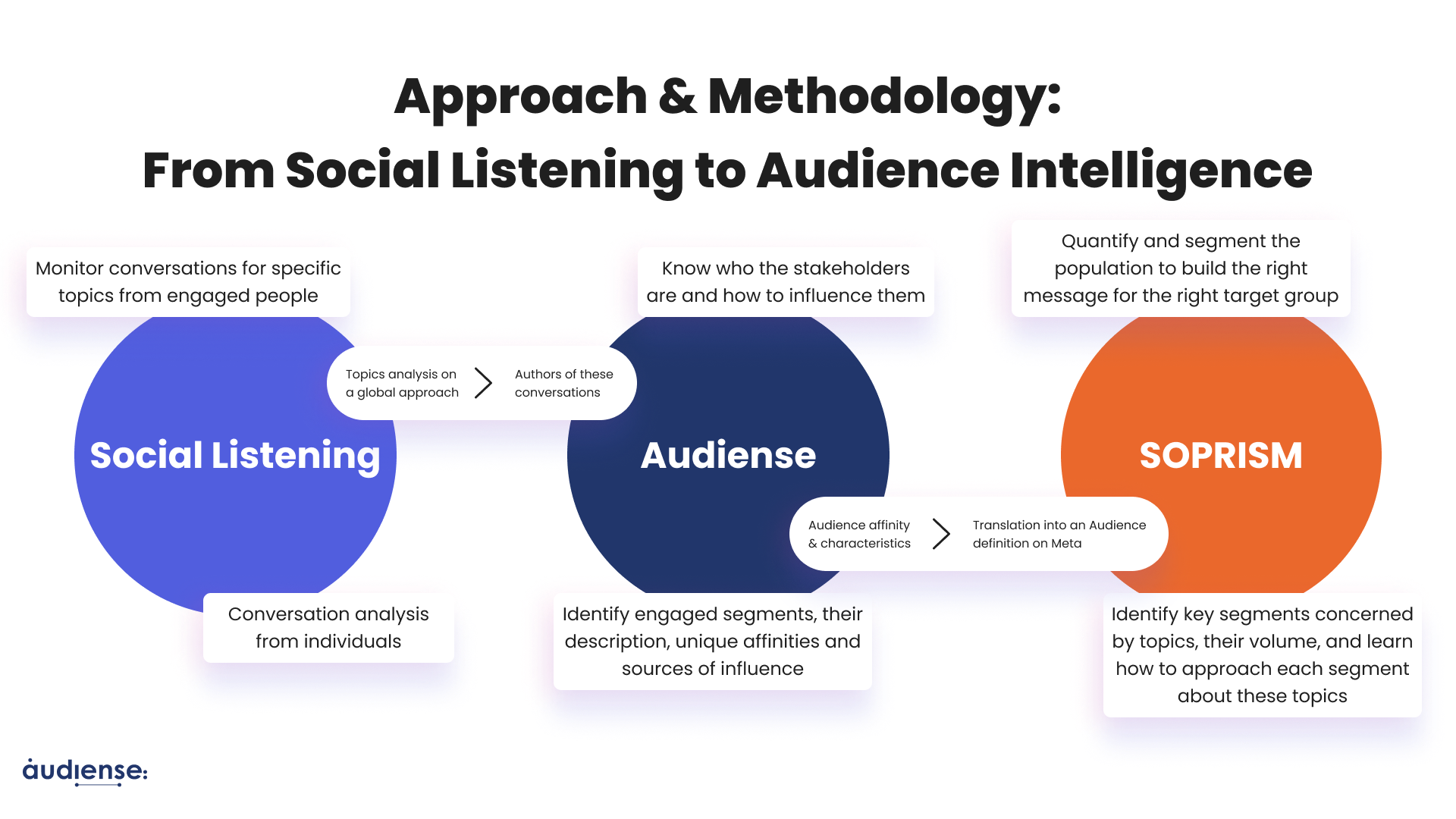
Taking action based on social listening insights
Ultimately, the true value of social listening lies in the actions you take based on the insights gained. Here are some areas where you can leverage social listening insights:
Improve customer service
Identify customer pain points and concerns to enhance your customer service efforts. Promptly respond to queries, address complaints, and provide personalized support.
Social listening enables companies to monitor and analyze customer conversations, feedback, and concerns across social media platforms. By actively listening to customer sentiments and addressing their needs and issues, companies can significantly improve their customer service.
- Promptly address customer queries and complaints: Social listening allows companies to identify and respond to customer queries and complaints in real-time. By promptly addressing these issues, companies can demonstrate their commitment to customer satisfaction and build trust.
- Personalize customer interactions: By analyzing customer conversations, preferences, and pain points, companies can gain insights into individual customer needs. This enables them to deliver personalized support, recommendations, and solutions, enhancing the overall customer experience.
- Proactively identify and resolve emerging issues: Social listening helps companies detect and address emerging issues before they escalate. By monitoring customer sentiments and detecting patterns, companies can identify potential problems and take proactive measures to prevent customer dissatisfaction.
Enhance product development
Gather feedback and suggestions from your audience to improve your products or services. Understand their needs and preferences to develop offerings that resonate with them.
Social listening provides valuable insights into customer preferences, opinions, and demands. This information can be leveraged to enhance product and service development strategies. Here's how social listening contributes to this area:
- Gathering customer feedback: By monitoring customer conversations and feedback on social media, companies can gather valuable insights regarding their products and services. This feedback helps identify areas of improvement and innovation, enabling companies to develop offerings that align with customer expectations.
- Identifying emerging trends and needs: Social listening helps companies stay attuned to emerging trends and changing customer needs. By analyzing conversations, sentiments, and discussions related to their industry, companies can identify new opportunities for product development and adapt their offerings accordingly.
- Testing and validating ideas: Social listening can serve as a valuable tool for testing new product or service ideas. By engaging in conversations and gathering feedback from customers, companies can validate concepts and make data-driven decisions before investing significant resources into development.
Strengthen brand reputation
Monitor brand sentiment and address any negative perceptions promptly. Engage with your audience, provide valuable content, and build positive relationships to foster a strong brand reputation.
Brand reputation is a critical asset for companies, and social listening plays a vital role in monitoring and managing it effectively. Here's how social listening helps strengthen brand reputation:
- Monitoring brand mentions and sentiment: Social listening allows companies to monitor conversations and sentiments surrounding their brand. By actively tracking brand mentions, companies can address any negative feedback or misconceptions promptly, thus protecting and enhancing their brand reputation.
- Engaging with customers and influencers: Social listening helps identify brand advocates and influencers who speak positively about the company. By engaging with these individuals, companies can foster positive relationships, amplify their brand message, and enhance their reputation through word-of-mouth marketing.
- Crisis management and prevention: Social listening enables companies to detect early-warning signs of potential crises. By monitoring conversations, sentiment trends, and emerging issues, companies can take proactive measures to prevent or manage crises effectively, minimizing the impact on their brand reputation.
Optimize marketing strategies
Use social listening insights to refine your marketing campaigns. Understand what content resonates with your audience, build and update more accurate personas, identify the most effective channels, and adjust your messaging accordingly.
Social listening provides valuable insights into audience preferences, interests, and behaviors, helping companies optimize their marketing strategies. Here's how social listening contributes to this area:
- Audience segmentation and targeting: By analyzing the audiences behind social media conversations, companies can gain insights into the demographics, interests, and preferences of key consumer segments. This information allows for more effective segmentation and targeting in marketing campaigns, ensuring that messages reach the right audience at the right time.
- Content optimization: Social listening helps companies understand the type of content that resonates with their audience. By analyzing engagement levels, sentiment, and discussions around content topics, companies can optimize their content strategies, create more relevant and engaging content, and drive better results.
- Identifying influencers and partnerships: Social listening enables companies to identify influencers and thought leaders in their industry. By monitoring conversations and engagement levels, companies can identify potential influencers for collaborations and partnerships, amplifying their brand reach and credibility.
Key takeaways
In today's fast-paced and ever-changing digital landscape, social media is gaining on the traditional web as the leading source of information. Actively listening and engaging with your audience across these platforms is no longer a nice-to-have; it’s essential for cross-department success.
Here’s a recap of what you learned about the process of social listening in this guide:
- What social listening is and why it's so valuable to brands in a digital era
- How major brands like Netflix, Slack, and Chipotle use social listening
- The steps to implementing your own social listening strategy
- Best practices for yielding better results from your social listening
- How to use social listening insights to improve outcomes across all departments
An effective social listening strategy, blended with audience intelligence, offers numerous benefits for your business. It provides deeper customer insights, enabling you to understand their preferences, needs, and pain points. Informed decision-making becomes possible as you base your strategies on real-time data and audience feedback. By establishing stronger relationships with your audience, you can build trust, loyalty, and advocacy.
Learn how you can integrate a consumer intelligence tool like Audiense Insights into your strategy to enhance the value of your social listening platform.






